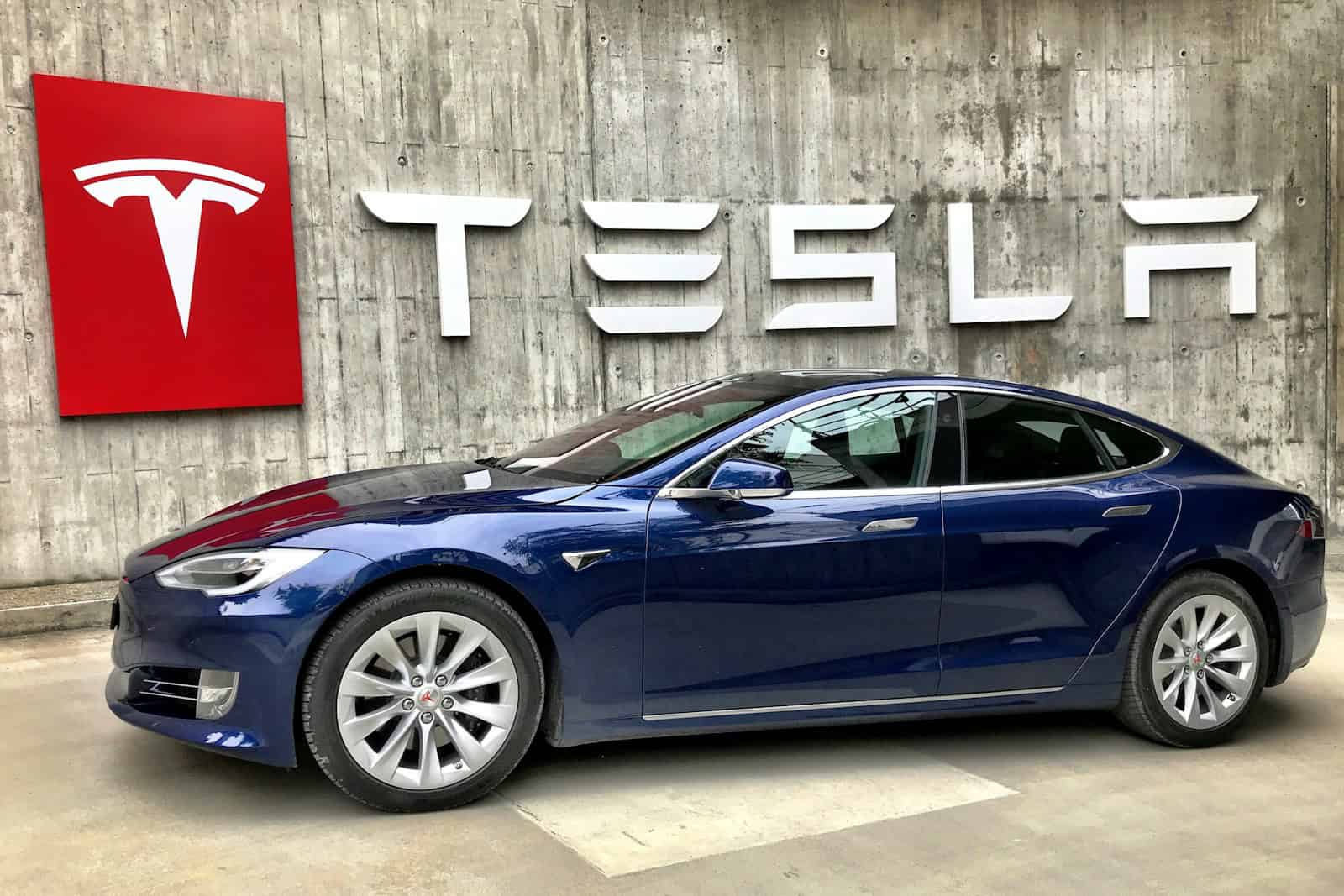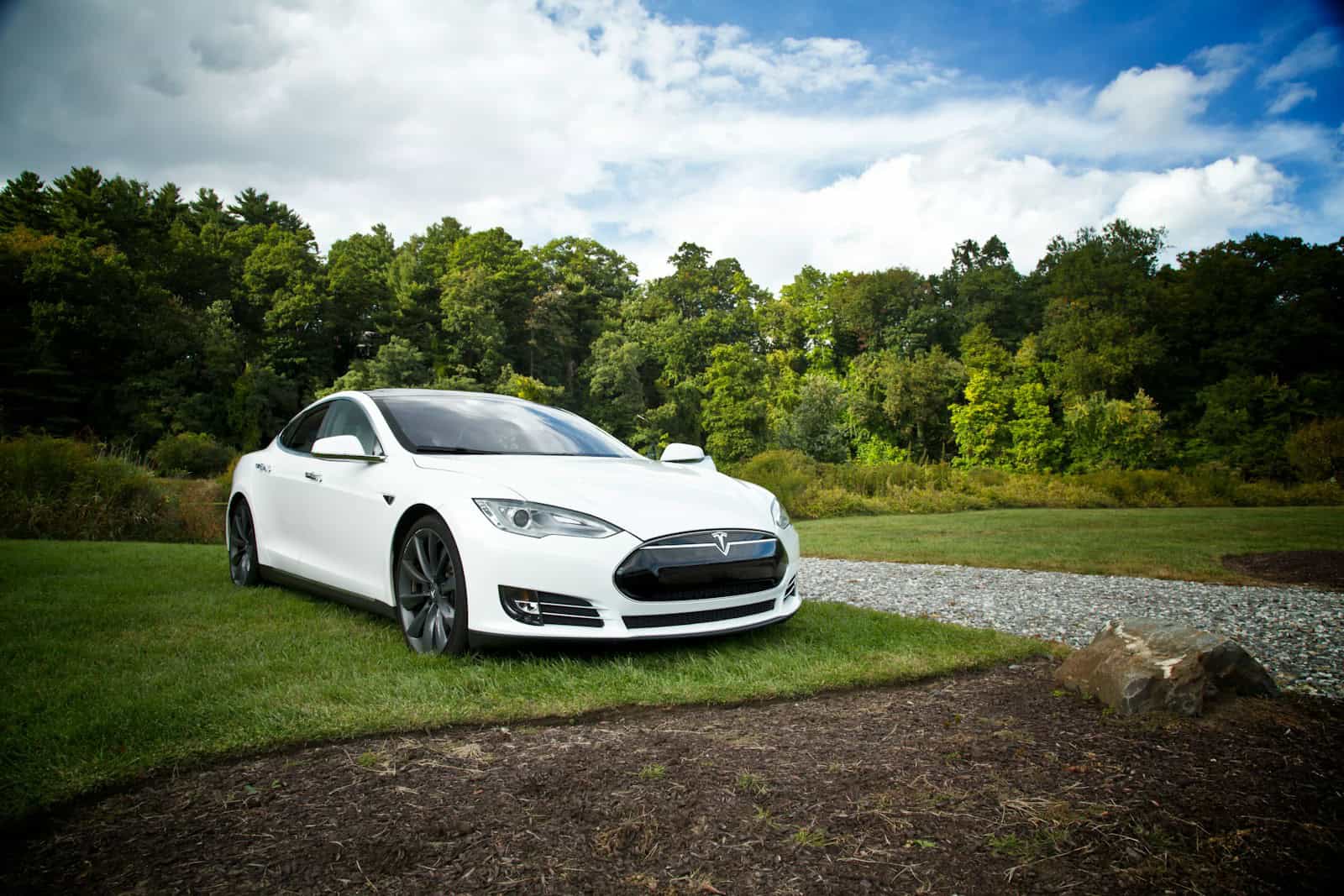Self-driving technology is no longer futuristic—it’s already changing how we drive today. The best autopilot cars of 2025 bring semi-autonomous features to the mainstream, with systems that can handle steering, braking, acceleration, and even lane changes on mapped highways.
While full autonomy (Level 5) remains out of reach, today’s top vehicles offer impressive assistance for long trips, urban commuting, and stop-and-go traffic. From Tesla’s camera-driven Autopilot to Mercedes-Benz’s groundbreaking Level 3 Drive Pilot, these cars blend convenience, safety, and innovation in ways that redefine what drivers can expect behind the wheel.
Below is a ranked list of the top autopilot cars available in 2025, each offering advanced driver-assistance systems and available for purchase. Prices vary depending on features and trim levels, but every option here pushes the envelope on automated driving.

Best Autopilot Cars of 2025
| Rank | Model |
|---|---|
| 1 | Tesla Model S with Autopilot |
| 2 | Cadillac Escalade with Super Cruise |
| 3 | Chevrolet Bolt with Enhanced Security Package |
| 4 | BMW iX with Driving Assistant Professional |
| 5 | Mercedes-Benz S-Class with Drive Pilot |
| 6 | Audi A8 with Traffic Jam Pilot |
| 7 | Porsche Taycan with InnoDrive |
| 8 | Nissan Ariya with ProPILOT Assist |
| 9 | Ford Mustang Mach-E with Co-Pilot360 |
| 10 | Hyundai Ioniq 5 with Highway Driving Assist II |
These rankings are based on real-world performance, feature sets, and how well each vehicle integrates hands-free and assisted driving capabilities into daily use. From luxury flagships to affordable EVs, 2025 has made cutting-edge driving technology more accessible than ever.
1. Tesla Model S with Autopilot
The Tesla Model S stands out as a leading car with advanced driver assistance technology. The Autopilot system on the Model S helps drivers with steering, acceleration, and braking during highway driving.
All current Tesla Model S vehicles come with basic Autopilot features. These include Traffic-Aware Cruise Control and Autosteer functions that work on most highways.
The system uses multiple cameras, ultrasonic sensors, and radar to watch the road. This hardware lets the car “see” its surroundings and make smart driving choices.
Tesla offers the basic Autopilot system as standard on new Model S cars. For those wanting more features, the Full Self-Driving (Supervised) package is available for an extra cost.
The Model S Autopilot works best on highways with clear lane markings. Drivers must keep their hands on the wheel and stay alert while using the system.
On newer Model S vehicles, Autopilot can change lanes, navigate highway interchanges, and even park the car. The Navigate on Autopilot feature can be turned on by pulling the cruise stalk toward you twice.
Despite its name, Autopilot doesn’t make the Model S fully self-driving. The 2025 Tesla Model S still needs active driver supervision at all times.
The system has gotten better with software updates over the years. Tesla regularly adds new features and improves existing ones through wireless updates.
Tesla Model S owners often praise how smooth the Autopilot system feels. It reduces driver fatigue during long trips by handling many routine driving tasks.
Compared to other luxury cars, the Tesla Model S Autopilot remains competitive. However, newer BMW, Mercedes, and Audi models have caught up with similar features.
The Model S with Autopilot shows Tesla’s focus on creating cars that blend luxury with cutting-edge technology. The system continues to be a key selling point for the electric sedan.
2. Cadillac Escalade with Super Cruise
The Cadillac Escalade offers one of the most advanced hands-free driving systems available today. The Super Cruise technology allows drivers to take their hands off the wheel while still maintaining safety and control.
Unlike some competitors, Super Cruise uses a mix of cameras, sensors, and LiDAR map data to track road conditions. This combination helps the system detect curves and changes in the road ahead with high accuracy.
One standout feature is the ability to change lanes without touching the steering wheel. The driver just needs to activate the turn signal, and the Escalade handles the rest.
The system watches the driver too. A small camera on the steering column makes sure you’re paying attention to the road. If you look away for too long, the system warns you to focus.
Super Cruise only works on mapped highways. It uses real-time precise positioning to know exactly where the vehicle is at all times.
Many drivers find that Super Cruise makes long trips less tiring. The technology takes over the boring parts of highway driving while keeping safety as the top priority.
In comparison to Tesla’s Autopilot, some users find the Cadillac system more dependable on highways. However, it’s important to note that Super Cruise is not fully autonomous driving.
Drivers testing the system on road trips report that it performed extremely well and took away much of the stress from hours behind the wheel.
The Escalade version of Super Cruise benefits from the vehicle’s large size and smooth ride. The system feels natural and builds driver confidence quickly.
Despite its strengths, there are some areas where improvements could help. Some users on Reddit discussions mention occasional hiccups in certain driving conditions.
The Super Cruise feature comes with Cadillac Connected Services, which requires a subscription after the initial trial period. This is something to consider when looking at the long-term cost of ownership.
For luxury SUV buyers who spend a lot of time on highways, the Escalade with Super Cruise offers a compelling package. The combination of comfort and hands-free driving makes it stand out in its class.
3. Chevrolet Bolt with Enhanced Security Package
The Chevrolet Bolt offers drivers an impressive option in the world of self-driving cars. This affordable electric vehicle comes with a robust driver assistance system that stands out in the market.
The Bolt EUV (Electric Utility Vehicle) can be equipped with Super Cruise technology, Chevrolet’s hands-free driving system. This system allows drivers to travel on compatible roads without keeping their hands on the wheel.
Super Cruise works differently than some other systems. It uses a mix of cameras, sensors, and detailed mapping to keep the car safely in its lane. The system also watches the driver to make sure they’re paying attention to the road.
When comparing costs, the Bolt EUV with Super Cruise offers great value. It’s about $14,000 less expensive than a Tesla Model 3 with Enhanced Autopilot. Even a base Model 3 costs about $8,000 more than a well-equipped Bolt EUV.
For buyers seeking value, the Bolt EUV with the Sun and Sound package plus Super Cruise is hard to beat. Some experts have called it an EV steal with advanced driver assist technology.
The Super Cruise system in the Bolt combines various technologies from different suppliers. This creates a system that some reviewers have called the best autonomous driving experience available today.
Unlike some systems that work on any road, Super Cruise only operates on roads that have been mapped in detail. This limit actually helps make the system safer and more reliable when it is in use.
The Bolt’s system includes a light bar on the steering wheel that changes color to show the system’s status. Green means Super Cruise is working, while red means the driver needs to take control right away.
For 2025, the Bolt continues to offer this technology at a price point that makes advanced driver assistance accessible to more people. The system works well on highways and can handle maintaining speed, keeping lane position, and following curves in the road.
4. BMW iX with Driving Assistant Professional
The BMW iX offers one of the most advanced self-driving systems on the market with its Driving Assistant Professional Package. This system stands out because it allows for hands-free driving up to 85 mph, making highway trips more relaxing.
Unlike other BMW models, the iX version of this package includes Highway Assist. This feature keeps the car centered in its lane while maintaining a safe distance from vehicles ahead without requiring hands on the wheel.
The system uses a mix of cameras, radar, and sensors to track road conditions. It can handle curves, traffic slowdowns, and lane changes with minimal input from the driver.
BMW designed the interface to be user-friendly. Drivers can activate the system with a button on the steering wheel, and the dashboard display clearly shows when hands-free mode is active.
The iX system also includes automatic speed adjustments based on navigation data. When approaching turns that are part of the planned route, the car will slow down automatically for safer handling.
Safety remains a priority with this system. The iX constantly monitors driver attention through an interior camera. If the driver looks away from the road for too long, the system gives warnings and eventually deactivates.
The 2025 BMW iX pairs this technology with impressive electric performance. With up to 324 miles of range and 610 horsepower in top trims, it combines self-driving features with exciting driving dynamics.
Real-world testing shows the system works smoothly in most conditions. The Advanced Driver Assistance Systems respond well to everyday driving scenarios, though they still require driver supervision.
The package includes other helpful features like automatic emergency braking, cross-traffic alerts, and parking assistance. These work together to create a comprehensive safety net.
Weather can affect system performance. Heavy rain, snow, or fog might temporarily limit some functions until conditions improve.
For daily commutes or long trips, the BMW iX with Driving Assistant Professional represents a significant step toward autonomous driving while maintaining the brand’s focus on driver engagement when desired.
5. Mercedes-Benz S-Class with Drive Pilot
The Mercedes-Benz S-Class stands out with its Drive Pilot system, which marks a major step forward in car automation. This system is special because it’s the first SAE Level 3 autonomous driving system available on production cars.
Unlike other driver assistance features, Drive Pilot allows drivers to take their hands off the wheel and eyes off the road in certain conditions. The system handles steering, braking, and accelerating without human input when activated.
There are strict limits to when you can use Drive Pilot. It works on highways with clear lane markings and in good weather. The system also needs light traffic moving at steady speeds.
Mercedes has recently upgraded Drive Pilot to work at speeds up to 95 km/h (about 60 mph). This is a big jump from its earlier limit and makes the system more useful in real-world driving.
The technology uses a mix of sensors to work properly. These include cameras, radar, lidar, and GPS to create a detailed picture of the road and surroundings.
One interesting fact about Drive Pilot is that it’s hard to activate. Users report that conditions must be “absolutely optimal” before the system allows use. This shows Mercedes’ focus on safety.
When active, the system lets drivers do other things like watch videos or check emails. This is a key difference from Level 2 systems that require constant attention.
Mercedes has been preparing this technology for the American market. The company is working with regulators to gain approval in more US states beyond Nevada and California.
The S-Class with Drive Pilot represents luxury and cutting-edge tech combined. The system shows how car makers are slowly but surely moving toward fully self-driving cars.
For drivers who want the most advanced automation available today, the Mercedes S-Class with Drive Pilot offers a glimpse of the future. It’s not cheap, but it pushes the boundaries of what cars can do.
6. Audi A8 with Traffic Jam Pilot
The Audi A8 made waves in the automotive world when it announced its Traffic Jam Pilot system, which was designed to offer SAE Level 3 automated driving. This marked a significant step beyond the Level 2 systems found in most cars today.
Unlike other driver assistance features, Level 3 automation meant drivers would no longer need to constantly monitor the road. The system was specifically created to handle slow-moving traffic situations up to 60 kilometers per hour.
When active, Audi planned to take legal responsibility for the car’s driving actions. This included accepting liability for accidents or other incidents that might occur while the system was engaged.
The A8’s system stood out because it allowed drivers to truly take their hands off the wheel and attention off the road in certain conditions. Drivers could watch videos or check emails while the car handled the driving tasks.
Unfortunately, Audi’s ambitious plans hit roadblocks. Despite developing this cutting-edge technology, Audi ultimately decided not to implement the Traffic Jam Pilot in production A8 vehicles, even in Europe where it was initially planned for release.
Regulatory challenges played a major role in this decision. Different countries had varying rules about autonomous driving, making it difficult to launch such features globally.
The A8 still offers impressive driver assistance features, but they remain at Level 2, requiring driver supervision at all times. This highlights the gap between technological capability and real-world implementation.
The system used a combination of radar, cameras, and the industry’s first lidar sensor in a production car. These worked together to create a detailed view of the surrounding environment.
Americans never had the chance to experience this system, as Audi determined early on that U.S. regulations wouldn’t allow for the system’s operation on American roads.
The Audi A8 case demonstrates how advanced automotive technology must navigate not just technical challenges but also legal and regulatory landscapes. Despite not reaching production, the Traffic Jam Pilot showed what’s possible in autonomous driving.
7. Porsche Taycan with InnoDrive
The Porsche Taycan offers a premium driver assistance feature called InnoDrive. This system works as an enhanced form of adaptive cruise control that helps drivers on highways and well-marked roads.
InnoDrive goes beyond basic cruise control by looking ahead at what’s coming. It can anticipate topographical features, traffic, and speed limits to adjust the car’s speed automatically.
For Taycan owners, InnoDrive has become a talking point. Some drivers find it works wonderfully on long trips, making highway driving less tiring.
The system is not meant to be a fully autonomous driving feature. Drivers still need to keep their hands on the wheel and stay alert at all times.
When compared to Tesla’s Autopilot, some users note that InnoDrive isn’t quite as advanced. One Reddit user mentioned that Autopilot is better, but InnoDrive works fine for highway driving.
Porsche has even offered InnoDrive as a free activation for some Taycan owners. This “Function On Demand” approach lets drivers try the system without paying extra upfront.
The big question for many potential buyers is whether InnoDrive is worth getting. The answer depends on how much highway driving you do and your comfort with driver assistance tech.
For daily commuters who spend time on highways, InnoDrive can make driving more relaxing. The system handles speed adjustments and helps maintain safe distances from other cars.
InnoDrive fits Porsche’s approach to technology – it aims to help drivers rather than replace them. This matches the brand’s focus on driving enjoyment while adding modern conveniences.
Before buying a Taycan with InnoDrive, potential owners might want to test the feature to see if it matches their driving style. Not everyone wants or needs driver assistance features, even in a high-tech car like the Taycan.
8. Nissan Ariya with ProPILOT Assist
The Nissan Ariya stands out in the electric vehicle market with its advanced driver assistance technology. This all-electric crossover comes with ProPILOT Assist 2.0, which represents a major step up from earlier versions.
ProPILOT Assist 2.0 offers hands-off driving on single lanes. Drivers can take their hands off the wheel while the system keeps the car centered and maintains a safe distance from other vehicles. The car does all this while staying within its lane.
The system works well at tracking cars ahead. It slows down or speeds up automatically to match traffic flow without getting too close to the vehicle in front. This makes highway driving much less tiring.
For those who prefer the latest tech, the Ariya’s ProPILOT system comes as an optional feature. Though not standard on all models, many buyers find it worth the extra cost for the added convenience and safety.
Some versions of the Ariya feature ProPILOT 2.1, an updated version that builds on the 2.0 system. This newer version can suggest lane changes when passing slower vehicles and then recommend moving back to the original lane afterward.
The system also uses map data to improve its performance. With Navi-link integration, the car can anticipate upcoming exits and off-ramps, adjusting speed accordingly. This makes the driving experience smoother and more predictable.
Safety remains a priority with the ProPILOT system. It includes features that monitor traffic and road conditions constantly. If the driver needs to take control, the system gives clear alerts.
The Ariya’s ProPILOT interface is user-friendly. Drivers can easily turn the system on or off using steering wheel controls. The dashboard display clearly shows when the system is active.
For 2025 models, Nissan has refined the system further based on customer feedback. The improvements make the system more intuitive and responsive to real-world driving conditions.
Despite its capabilities, ProPILOT Assist still requires driver attention. It works best as a driving aid rather than a replacement for an alert driver. The driver must stay ready to take control when needed.
9. Ford Mustang Mach-E with Co-Pilot360
The Ford Mustang Mach-E comes equipped with Ford Co-Pilot360 technology, a suite of driver assistance features designed to make driving safer and easier. This electric SUV offers various levels of driving assistance depending on the package selected.
The base system, Co-Pilot360 2.0, includes several helpful features. Drivers benefit from automatic emergency braking, blind-spot monitoring, lane keep assist, and automatic high beams. These features work together to help prevent accidents and make everyday driving less stressful.
For those wanting more advanced capabilities, the Mach-E offers Intelligent Adaptive Cruise Control. This system maintains a set distance from vehicles ahead while keeping the car centered in its lane. It works well even on curvy roads, showing good handling in challenging driving conditions.
Some drivers have tested the system on winding roads with positive results. The Mach-E’s Co-Pilot Assist performs admirably on challenging bends, helping drivers stay safely in their lane while maintaining appropriate speeds.
The system does have limitations worth noting. Some users have reported issues with how the system handles certain road situations. In particular, there are concerns about how the system might respond in emergency situations where quick decisions are needed.
Ford designed the Mach-E’s driver assistance features to complement the driver rather than replace them. The system requires drivers to keep their hands on the wheel and stay alert. It’s a helping hand, not a fully autonomous system.
The Mustang Mach-E joins several other Ford models that feature Co-Pilot360 technology, including the standard Mustang and F-150. This shows Ford’s commitment to bringing advanced driver assistance across their vehicle lineup.
For EV buyers interested in driver assistance features, the Mach-E offers a good balance of helpful technology while still keeping the driving experience engaging. Its electric performance combined with these safety features makes it a compelling option in the electric SUV market.
10. Hyundai Ioniq 5 with Highway Driving Assist II
The Hyundai Ioniq 5 comes equipped with an advanced driver assistance system called Highway Driving Assist II (HDA2). This system takes driving comfort to new heights on highways and major roads.
HDA2 combines several smart features to make driving easier. It uses adaptive cruise control to maintain safe distances from cars ahead while keeping the vehicle centered in its lane.
What makes HDA2 stand out is its ability to handle lane changes automatically. When the driver signals, the system checks for safe conditions and can execute the lane change without hands on the wheel.
Many drivers find HDA2 extremely reliable on both straight highways and curvy roads. User reports suggest the system works well even after 10,000 miles of use.
Some Ioniq 5 owners have compared HDA2 favorably against competing systems like Tesla’s Autopilot. The smooth operation and predictable behavior earn high marks from drivers.
In stop-and-go traffic, HDA2 proves its worth by maintaining appropriate speeds and distances. This feature reduces driver fatigue during busy commutes.
The system alerts drivers when attention is needed. This safety feature ensures the driver stays engaged with driving tasks despite the automation.
Road tests show HDA2 handles most highway situations confidently. The system can navigate gentle curves and maintain steady lane position even in challenging conditions.
Setting up HDA2 is straightforward with controls built into the steering wheel. Drivers can easily adjust following distance and maximum speed through simple button presses.
For maximum safety, the system monitors driver attention. If a driver looks away too long, the Ioniq 5 provides warnings to refocus on the road.
Hyundai updates the system regularly through over-the-air software updates. These improvements enhance performance without requiring dealership visits.
The Highway Driving Assistant in the Ioniq 5 represents a significant step forward in semi-autonomous driving technology. It offers peace of mind for long trips and daily commutes alike.
Understanding Autopilot Technology
Autopilot systems in modern cars combine sensors, cameras, and software to assist drivers and improve safety. These technologies vary widely in capability, from basic driver assistance to more advanced autonomous features.
How Autopilot Systems Work
Autopilot systems use multiple technologies to “see” and respond to road conditions. Most systems include:
- Cameras: Detect lane markings, traffic signs, and other vehicles
- Radar: Measures distance to objects and works in poor visibility
- Ultrasonic sensors: Detect nearby obstacles for parking assistance
- LiDAR (in some vehicles): Creates detailed 3D maps of surroundings
These sensors feed data to powerful computers that make driving decisions. Tesla’s Autopilot uses eight cameras for 360-degree visibility and twelve ultrasonic sensors to detect nearby cars.
The system processes this information to control steering, braking, and acceleration. Most autopilot features work best on highways with clear lane markings and predictable traffic patterns.
Car manufacturers update these systems regularly through software updates. This lets cars improve their self-driving abilities over time without hardware changes.
Levels of Autonomous Driving
The Society of Automotive Engineers (SAE) defines six levels of driving automation:
| Level | Name | Description |
|---|---|---|
| 0 | No Automation | Driver performs all tasks |
| 1 | Driver Assistance | System helps with steering OR braking/acceleration |
| 2 | Partial Automation | System handles steering AND braking/acceleration |
| 3 | Conditional Automation | System drives but human must be ready to take over |
| 4 | High Automation | System handles most driving situations independently |
| 5 | Full Automation | System drives everywhere in all conditions |
Most current “autopilot” systems operate at Level 2. This includes Tesla Autopilot and similar systems from other brands.
Level 2 systems require drivers to keep their hands on the wheel and stay alert. The car can handle routine driving tasks but cannot respond to all situations. Recent models from BMW, Mercedes, and Audi have caught up to Tesla in this technology.
Safety Features and Regulations
Self-driving technology relies on advanced safety systems that work together to protect passengers and other road users. Regulations continue to evolve as automakers push the boundaries of what autopilot features can do.
Key Safety Technologies in Autopilot Cars
Modern autopilot cars use multiple safety technologies to function properly. Automatic Emergency Braking (AEB) is now standard in nearly all new vehicles with self-driving capabilities. This feature stops the car when it detects potential collisions.
Lane-keeping systems prevent vehicles from drifting out of their lanes. These work alongside adaptive cruise control, which maintains safe distances from other vehicles.
Most autopilot cars use a combination of:
- Cameras that provide 360-degree visibility
- Radar sensors to detect objects in poor visibility
- Ultrasonic sensors for close-range object detection
- LIDAR (on some models) for precise distance mapping
Tesla vehicles feature multiple external cameras and powerful processors specifically designed for enhanced safety. Their system continuously monitors surroundings even when autopilot isn’t active.
Current Regulations and Legal Considerations
The legal framework for self-driving cars varies widely by location. The National Highway Traffic Safety Administration (NHTSA) classifies autonomous vehicles into six levels (0-5), from no automation to full automation.
Most consumer vehicles today operate at Level 2, where drivers must remain attentive despite automation assistance. Car manufacturers must clearly explain these limitations to buyers.
Key regulatory considerations include:
- Driver monitoring requirements (eye tracking, hand detection)
- Data recording for accident investigation
- Software update protocols
- Testing requirements before public deployment
Liability questions remain complicated. When accidents occur, determining responsibility between driver, manufacturer, and software developer becomes challenging.
Insurance companies have begun developing specialized policies for cars with autopilot features. These policies account for both human error and technological malfunctions.
Frequently Asked Questions
Self-driving cars are changing how we think about travel. Many people have questions about these new high-tech vehicles before making a purchase.
What are the top-rated autopilot vehicles available in the market as of 2025?
The Tesla Model S with Autopilot leads the market in 2025 with its advanced driver assistance features and regular software updates. It offers lane-keeping, adaptive cruise control, and automatic lane changes.
The Cadillac Escalade with Super Cruise ranks highly for its hands-free driving on pre-mapped highways. Its driver monitoring system ensures safety while allowing true hands-off operation.
Mercedes-Benz S-Class with Drive Pilot has gained recognition for being one of the first Level 3 systems legally approved for use in certain regions. It can handle driving tasks in specific conditions without driver supervision.
Which brands offer the most advanced self-driving car technology?
Tesla continues to lead with its Full Self-Driving (Supervised) technology, which includes navigate on autopilot and smart summon features. Their system uses cameras and neural networks instead of relying on expensive lidar.
Mercedes-Benz has made significant strides with Drive Pilot, becoming the first manufacturer to achieve Level 3 certification in multiple countries. Their system can legally take full responsibility during certain driving conditions.
BMW’s Driving Assistant Professional offers comprehensive automated features with their latest iX model. General Motors has also pushed boundaries with Super Cruise and Ultra Cruise technologies.
How do the capabilities of BMW’s latest self-driving car compare to its competitors?
BMW’s iX with Driving Assistant Professional excels in urban environments with its advanced intersection assistance and evasion aid. It offers automated parking that surpasses Tesla’s similar features in tight spaces.
The system falls slightly behind Tesla in highway driving scenarios where Autopilot has more extensive real-world testing data. However, BMW’s technology is considered more conservative and potentially safer in edge cases.
Compared to Mercedes Drive Pilot, BMW’s system remains at Level 2, requiring constant driver supervision. This puts it behind Mercedes in terms of technical classification but makes it available in more regions worldwide.
What is the price range for entry-level self-driving cars?
Entry-level vehicles with basic autopilot features start around $45,000 with the Chevrolet Bolt’s Enhanced Security Package. This includes adaptive cruise control and lane-keeping assistance at a relatively affordable price point.
Mid-tier options like the BMW iX with Driving Assistant Professional begin at approximately $85,000. These vehicles offer more comprehensive self-driving capabilities on highways and in traffic.
Premium models such as the Mercedes-Benz S-Class with Drive Pilot typically exceed $110,000. The high cost reflects both luxury amenities and advanced autonomous driving technology.
Are fully autonomous Level 5 vehicles commercially available to consumers?
No, Level 5 fully autonomous vehicles are not yet commercially available to consumers in 2025. Despite promises from manufacturers, technological and regulatory challenges have delayed their release.
The highest level of autonomy currently available to consumers is Level 3, offered by Mercedes-Benz in their S-Class with Drive Pilot. This system can operate without driver supervision in specific conditions but not in all scenarios.
Industry experts predict that true Level 5 autonomy, which can operate in all conditions without human intervention, may still be several years away from commercial availability.
How does Tesla’s AutoPilot feature differ from other brands’ autonomous driving features?
Tesla’s Autopilot relies entirely on cameras and neural networks. On the other hand, competitors use lidar and radar systems. This approach allows for more frequent software updates. However, it may have limitations in certain weather conditions.
Tesla collects data from its large fleet of vehicles to improve its system. This gives it a significant advantage in real-world testing over companies like BMW and Mercedes. Their vehicles have logged billions of miles using Autopilot features.
Unlike Cadillac’s Super Cruise, which only works on pre-mapped highways, Tesla’s system operates on virtually any road with visible lane markings. However, Tesla requires constant driver attention. Meanwhile, Cadillac’s system permits hands-free operation on compatible roads.







